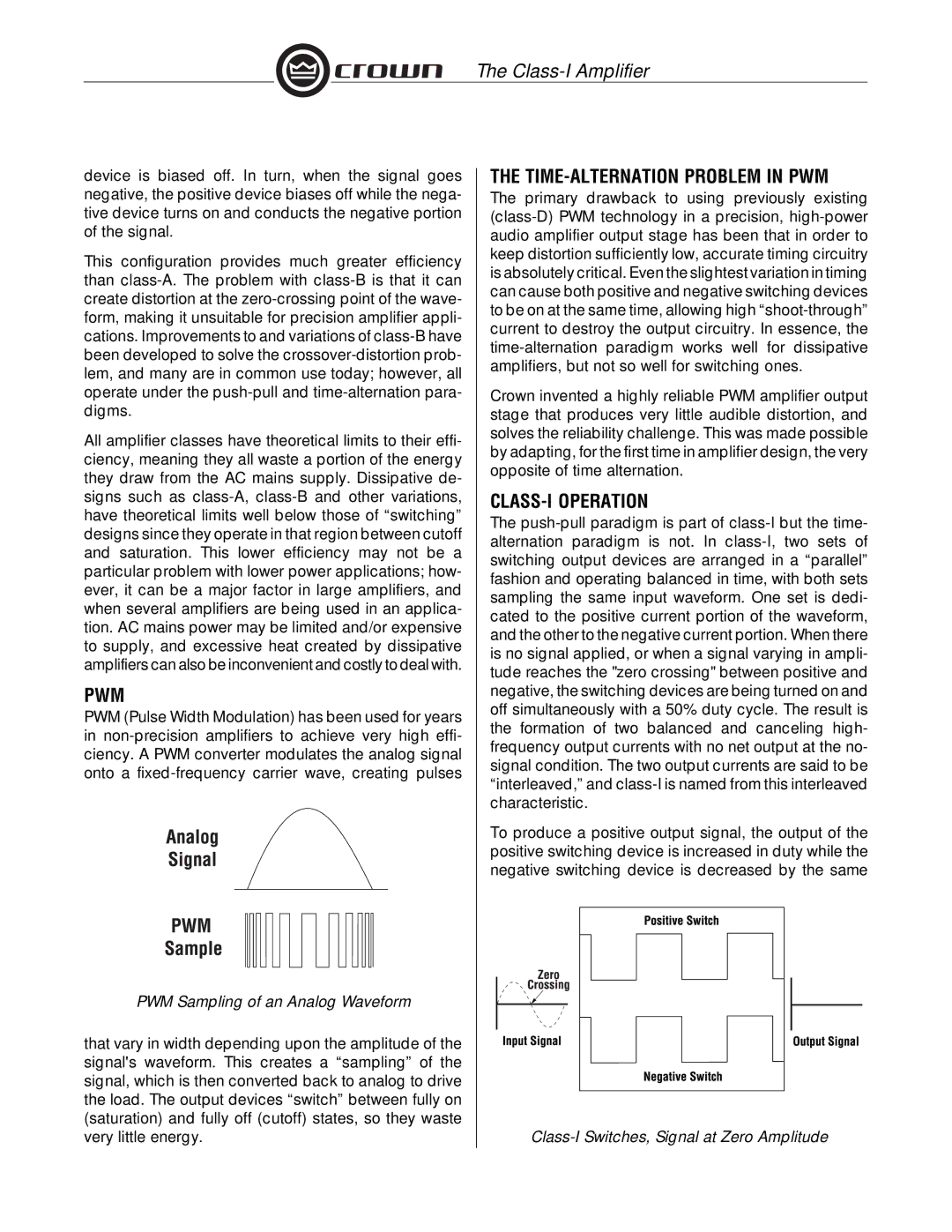Class-I specifications
Crown Audio, a leader in professional audio amplification, introduced the Crown Audio Class-I series as part of its commitment to delivering high-quality sound solutions for various applications. The Class-I amplifiers exemplify innovation in audio technology, combining advanced features with reliable performance.One of the standout characteristics of Crown Audio Class-I amplifiers is their efficient Class-D amplification technology. This approach not only enhances energy efficiency but also reduces heat generation, allowing for a compact design without sacrificing power output. The Class-D circuitry ensures that the amplifiers can deliver high power while maintaining low distortion levels, resulting in crystal-clear sound reproduction.
The Class-I series is designed with versatility in mind. These amplifiers are capable of being used in a wide range of settings, from large concert venues to smaller installations in bars and clubs. With various power ratings available, audio professionals can select the right amplifier for their specific needs, ensuring optimal performance in any environment.
Another notable feature of the Crown Audio Class-I series is the incorporation of advanced DSP (Digital Signal Processing) technology. This technology allows users to customize audio settings and control parameters such as equalization, delay, and limiters, making it easier to fine-tune the sound to suit the venue's acoustics. The intuitive user interface further simplifies the setup process, allowing for quick adjustments during live performances.
In addition to its technological advancements, the Class-I series prioritizes durability. Built with robust materials, these amplifiers are designed to withstand the rigors of everyday use while maintaining consistent performance. The thoughtful thermal management systems incorporated into their design ensure that the amplifiers can operate in demanding conditions without overheating.
Connectivity is another area where Crown Audio excels. The Class-I amplifiers come equipped with multiple input options, including analog and digital formats. This connectivity versatility allows sound engineers to seamlessly integrate the amplifiers into existing audio systems, ensuring a smooth user experience.
Ultimately, Crown Audio Class-I amplifiers stand out in the professional audio landscape due to their combination of cutting-edge technology, flexible design, and practical features. Whether for touring professionals or fixed installations, these amplifiers promise reliable performance and exceptional sound quality, making them a preferred choice for audio engineers worldwide.

